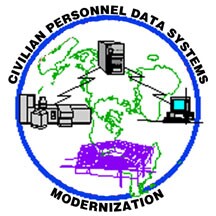 |
||
|
Director, Operational Test & Evaluation |
||
| FY97 Annual Report | ||
FY97 Annual Report
DEFENSE CIVILIAN PERSONNEL DATA SYSTEM (DCPDS)
| Air Force ACAT IAM Program 325 systems Total program cost (TY$) $157M Average unit cost (TY$) $500K Life cycle cost (TY$) $399M Full-rate production (IOC) 2QFY98 Prime Contractor Air Force Military Personnel Center | |
SYSTEM DESCRIPTION & CONTRIBUTION TO JOINT VISION 2010
DCPDS will provide the software application tools and the requisite hardware to support civilian personnel mission requirements for DoD. Its genesis was the regionalization of DoD personnel data centers, with the consolidation of personnel service centers. DCPDS complements the regionalization in that the automated tools it provides will facilitate the expected decrease in the personnelist to customer service ratio (from 1:50 to 1:100).
Some aspect of DCPDS will be installed at each of level of the hierarchical personnel command chain. The main focus of DCPDS is the Regional Service Centers (RSCs) and Customer Support Units (CSUs). They will receive the full DCPDS hardware and software. Other lower levels will receive some portion of the system suite commensurate with the scope of their operations and the willingness of their respective services to commit funds towards the project.
The basic design of the system is a client-server architecture. Data entered into the system at the CSUs will be collated and collected into a local data base before being sent on to the RSCs. The data base of record for each service's region (and for each DoD agency) will reside at their respective RSC. The Civilian Personnel Management Service (CPMS) will keep an all DoD data base for survey purposes.
Since regionalization is occurring concurrently with the development of DCPDS, it was necessary as a stopgap measure to develop software to streamline certain personnel functions for the regionalized environment. These functions include:
- training assignments
- job position development
- major personnel actions
- ad hoc data base search and query.
As this is a civilian personnel system, there is no direct contribution to the Joint Vision 2010 paradigm.
BACKGROUND INFORMATION
These four personnel process improvements (PPIs), which are also known as the interim DCPDS system, underwent an operational assessment (OA) in FY96. The OA indicated that the PPIs were not being employed by the personnelists in their day-to-day activities. As a result, little useful data could be collected as to their performance. It was concluded that the sites had not implemented the PPIs for a variety of reasons including:
- insufficient training
- inadequate business process planning
- immaturity of the software.
It was recommended that the implementation plans and training program be "beefed up" considerably and that another OA be conducted in FY97. Hardware buys to implement the PPIs, save for those necessary to ensure the continuation of the separate personnel center regionalization program, were put on hold until the PPIs were shown to be operationally effective and suitable.
TEST & EVALUATION ACTIVITY
An OA on the interim suite of PPIs was conducted at several operating DCPDS sites involving the Services (Air Force, Army, Navy, Marine Corps) and DoD non-Service organizations (Washington Headquarters Service) from 13 to 31 January 1997, in compliance with an OA plan approved by DOT&E on January 10, 1997. The OA focused on the interim system's ability to support civilian personnel operations in a regionalized environment and on the progress in the developmental effort to produce the objective, modernized DCPDS.
TEST & EVALUATION ASSESSMENT
The results indicate that the PPIs were being used profitably by most of the sites surveyed. In general, the personnelists found them superior to the legacy systems in that they made their jobs easier to perform by automating tasks that were once done manually. However, the OA also found that effective use of the PPIs depended to a large degree on the development of a strong infrastructure, including level of resources and time devoted to implementing the revised business practices which the interim system requires for improved productivity. The interim system generally performed better at those sites that put more resources towards implementing the interim system.
The OA also showed that there is a moderate risk that the objective DCPDS will not be delivered on time and ready for operational test and evaluation. Deficiencies were found in the areas of programmatic documentation, traceability of operational requirements through system design documentation into the production software, and the degree of completion of software development as of the date of the OA. As a result of the OA findings, an Integrated Product Team was established to address these programmatic issues.
LESSONS LEARNED
The primary lesson learned, based on the results of the OA on the interim system, was that there is a high likelihood that the success of the target system will depend heavily on the ability of the sites:
- to formulate realistic business process implementation plans
- to devote a high degree of resources, including people, training programs, and hardware infrastructure, to implementing DCPDS.
|
NEWSLETTER
|
| Join the GlobalSecurity.org mailing list |
|
|
|


